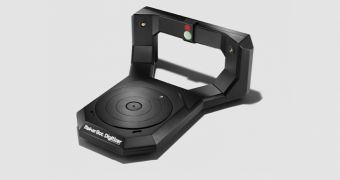That new arm of the technological world called 3D printing hasn't quite reached the stage where it's likely to start a revolution, but it's getting there fast, especially now that food is on the list of 3D printable things.
This is something that pretty much everyone in the media is in agreement on, and has been for over a year now, despite 3D printers and 3D printing services still being scarce.
We probably wouldn't be so optimistic if we hadn't seen tablets essentially push aside netbooks in a matter of months.
Tablets became the third component of the PC market, stealing share from desktops and laptops, in less than a year, even though it's classified as a mobile device, classified together with phones for the most part.
3D printers and 3D printing services are expected to transform the market of high-tech products in a similar scale, even if not in the same manner.
The New Scientist is already talking about the 3D printing revolution, while other publications, like The Guardian, are more reserved.
Both are in agreement over one thing though: the 3D printing industry will soar over the next seven years. Sure, it's mostly because of market analysts making predictions to that effect, but the point stands.
By 2020, the market will be worth $8 billion globally, or just under €6 billion, although knowing how fickle companies can be when it comes to exchange rates, the latter sum might turn out closer to €7-8 billion itself.
In any event, the progress will be spectacular, much like it was for music disks and tapes, or vinyl records if we were to look back in time far enough.
The array of items that can be 3D printed is broad even now, and even full-color printing has been invented, so it's not like there are many hurdles left to overcome, save pricing and mass availability.
Perhaps one of the biggest assets of 3D printing is that there is no difference between the cost of manufacture for single items and bulk production.
Sure, issues like 3D printed guns and their legality will certainly crop up from time to time, but that's normal and, thus, unlikely to slow down the adoption of 3D printing.

 14 DAY TRIAL //
14 DAY TRIAL //